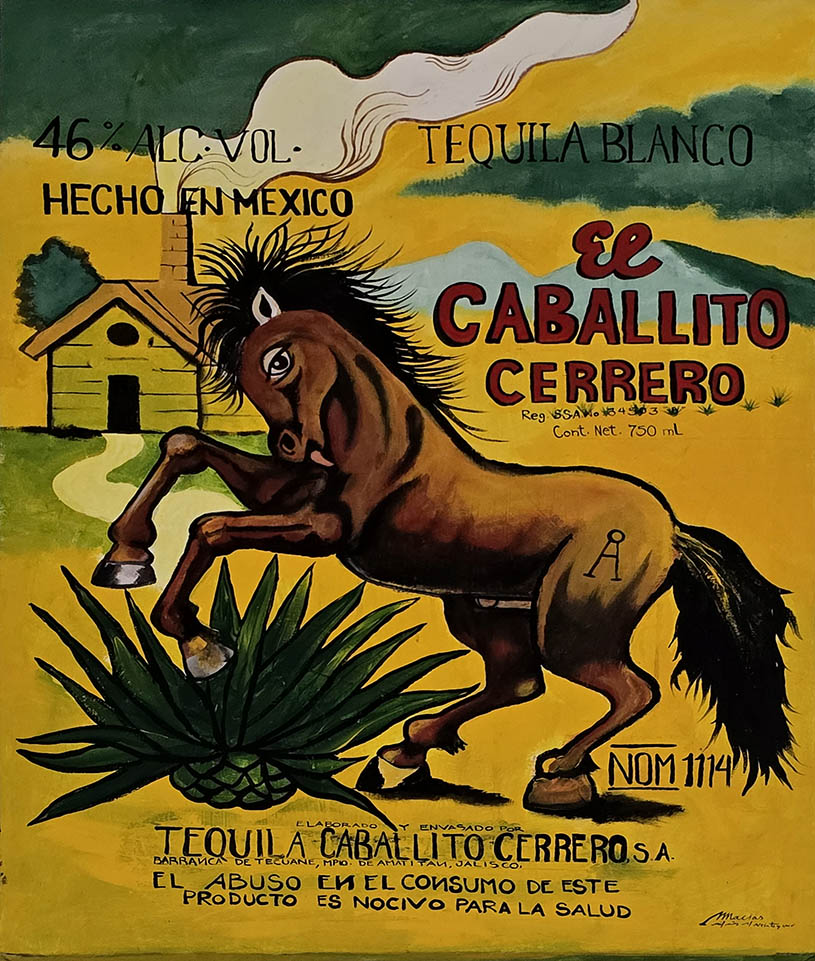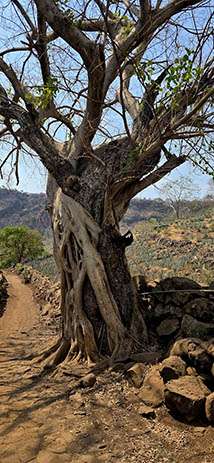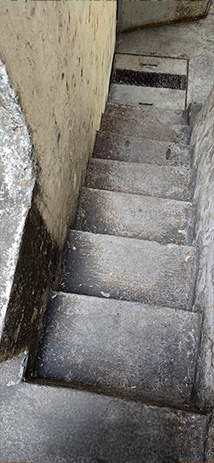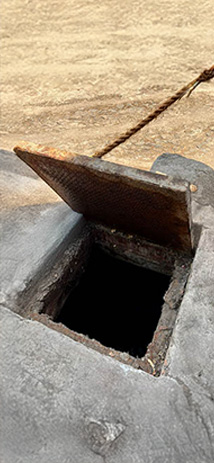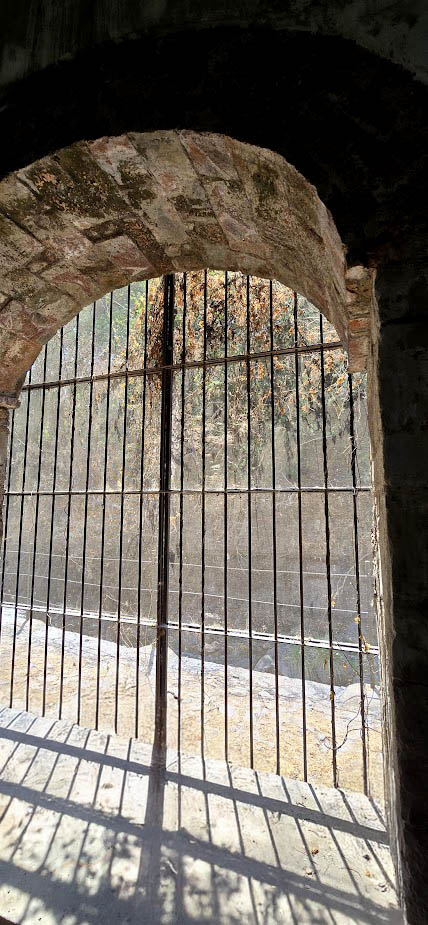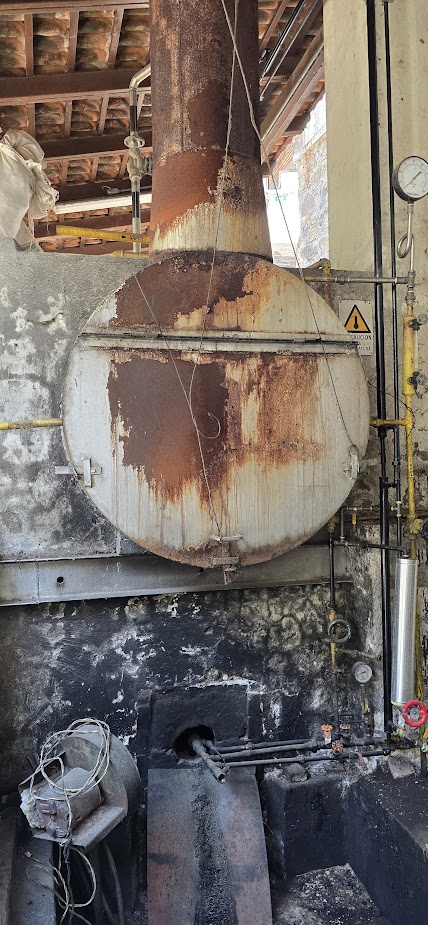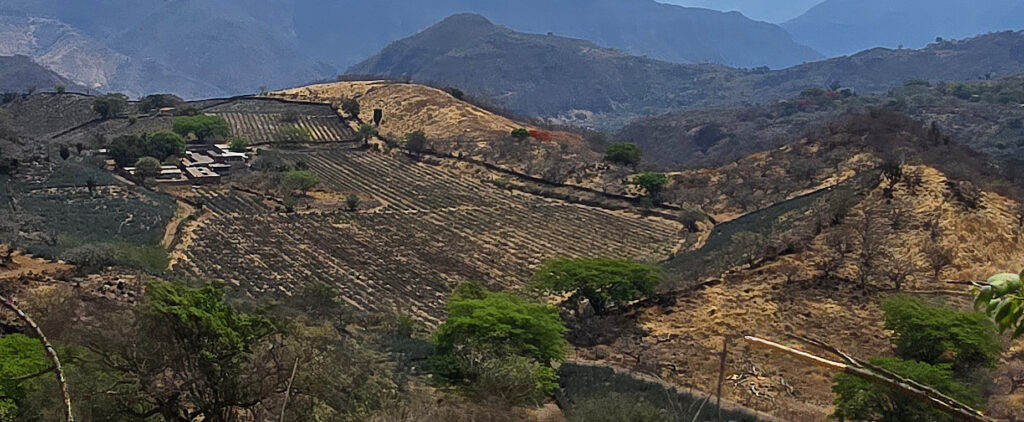
A Visit to the Caballito Cerrero Distillery
I visited Guadalajara somewhat regularly with my father when I was a child in the 1970s but all of that colonial charm and those rickety old wooden and crumbling buildings are mostly gone now. It’s a large city with large city problems.
But you may not think about that on the way to Amatitán, Jalisco. It’s a long drive on a country highway, about 45 minutes outside of the city that has that kind of rural vibe that some people find boring. I find it relaxing and beautiful.
My wife and stepson meet with a friend of a friend who is kind enough to take us on a private tour of the Caballito Cerrero distillery. They are not really open to the public and there are likely many reasons for that but the one that comes most sharply to mind is that the terrifying way down the valley to the distillery is not for the light-hearted.
There are many switchback curves down a windy road composed mostly of large loose rocks held together only by dust and pebbles and maybe some luck. The staggering drop-off on the edge of the narrow “road” would easily send you into a death roll if you aren’t careful. On the 30-minute drive down with lots of very slow moving and careful navigating, we are treated with breathtaking views of old México and the Santa Rosa Valley.
This is not like other areas with lots of cultivated fields or the places you see in the town of Tequila. This is wild country. We try to imagine how people would get in or out of this area before cars. Horseback, donkey or on foot would likely take hours each way. The tiny rocky road is lined on either side with spiney cacti, spindly old trees, dry brush and wild agave. It’s gorgeous. But God help you if you see another vehicle coming up the road as you’re headed down. Or worse, if your vehicle is even moderately too close to the ground. Luckily, we avoid tearing the bottom of the car open dozens of times by probably less than a millimeter of scraped metal.
A sign on the road near the bottom reads ANTIGUAS TABERNAS, we continue with nearly nothing but the landscape around us and the occasional remnants of a country fence. A few curves later and another reads SANTA RITA, before finally reaching the bottom where a low-key sign on a gate reads TEQUILA CABALLITO CERRERO along with the famous logo symbol in iron. Outside, we are greeted with the soft rushing sound of a nearby river, golden late morning sunshine and the sweet smell of agave carried on a light breeze through the valley. Our host smiles as she watches our wonder.
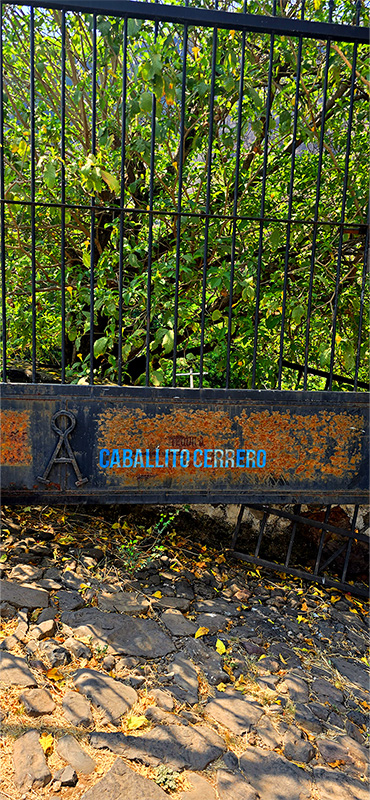
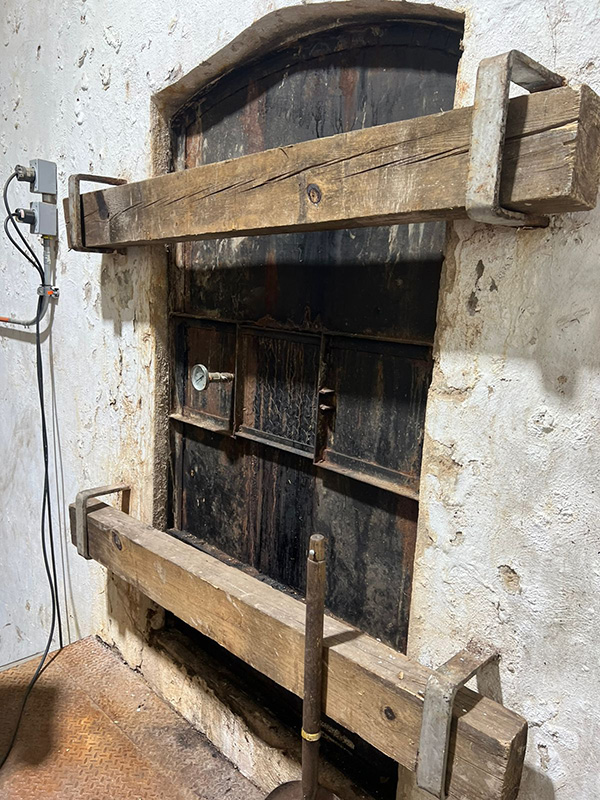
What is immediately apparent is that this place is old. Centuries old. Archeologically old. To one side, in fact, is the oldest known remnants of a distillery used back to the late 1500s or early 1600s. With some effort, I hoist open up one of three old iron doors on the ground by pulling on an aged, thick old rope, it groans and inside is the darkness below where the next batch of piñas will be dropped in. For now, it is empty and cold.
Down some narrow-worn stairs, we see some equipment from another century, iron, copper, aged and practically part of the cement and stone walls. Spider webs and rust in some corners of the walls. This is not the sanitized experience of a Cuervo tour.
The river heard from above is now close, we can see it just past a small aqueduct. An old donkey is wandering just underneath the aqueduct; it looks over at us curiously hoping for a snack. There are some roosters and a few goats lying about. Down below we walk inside of the very small but tall ovens where the agave is steamed-cooked.
We marvel at the age of the place, it’s positively ancient looking and smelling. The walls have a certain texture that only comes from this kind of longevity. The smell of yeast is in the air. There are old stills, vats and the copper pots no longer even look copper anymore, just the muted color of old worn metal. There are columns in the hallway, but none are bolted down. Yet, somehow, they perfectly support the ceiling. Giant stones are placed high above creating arched windows but who knows how they raised them up there so precisely so long ago.
We are led through the process by two young men who work there, they share with us the peculiarities of the distillery and the historical facts and curiosities of how things are done and how they used to be done. We later find out they are 2 of literally 5 people who make up everyone who works at the distillery – including the 2 owners. Just astounding. We are shown a small area where water rushes in from the nearby river. They explain how in older times, the workers would step into the small niche in the wall where the water comes in to clean off like a natural shower.
Everything seems way too small and way too old for a product of this supreme level of quality. This is absolutely not a giant place. In comparison, Fortaleza seems like 1000 times larger even though it is also a small player. There are no teams of people here, just 2 guys. They do pretty much everything.
We walk to the end where I count 14 total barrels. In them magic is happening. We’re told how the chato arrives from Oaxaca and the Blue Weber is local. The smell of fermentation is stronger here. We ask questions, they answer enthusiastically. They are proud of their work. Old wooden barrels sit quietly and we pause for a few moments to take it all in.
After a while we are led to a tasting area that is more like a small break room, nothing fancy. We are told that the owner and his son do not drink, they are lawyers, the tequila is more of a heritage thing than where they spend most of their energy. It was part of their family heritage that was passed down and they continue it lovingly but are not there full time. It literally is just these 2 guys and some help from one other person from time to time.
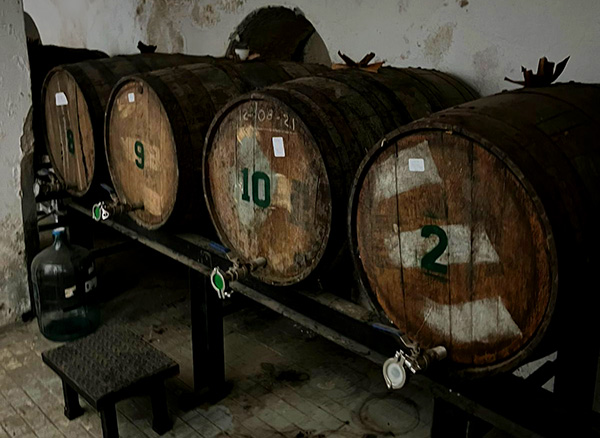
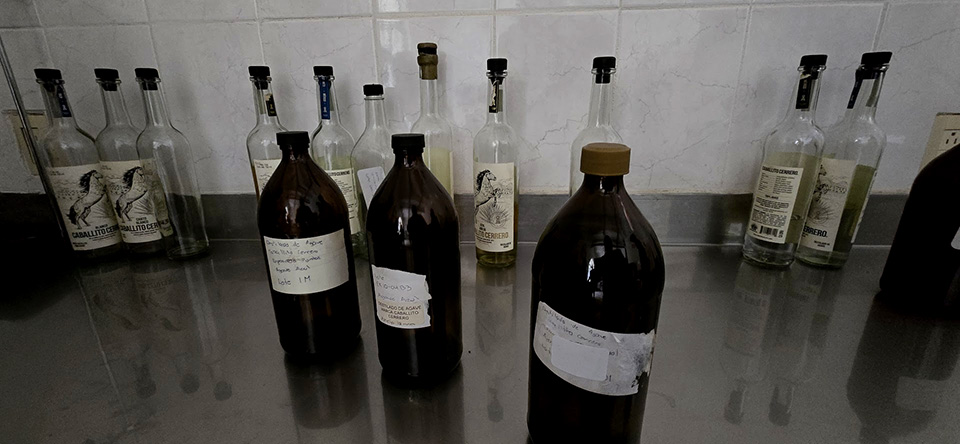
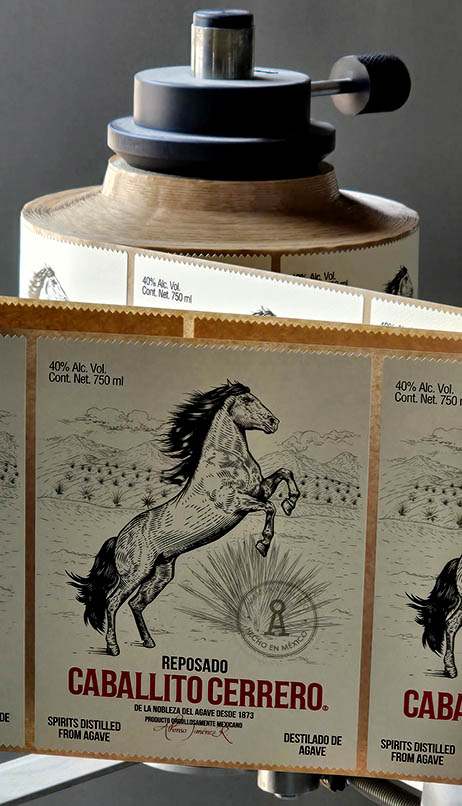
We taste some insanely good things. Practically holy water. Things I swear to you, you can’t imagine the taste. Exciting things not yet on the market but coming soon! Things I’ll dream about for a while. We talk, we laugh, we tell stories, we drink more. Both men are beer drinkers and confess to not being able to take the high proof. They watch as we do. Our host and guides share war stories about bottles and particular releases. We’re told about things to come. I am in my personal heaven.
We head over to a small building back up to ground level and they show us the bottling and labeling area. Very small, very humble but charming. The original Caballito Cerrero horsey image is up high on the wall. There’s a locked room with glass windows holding a tiny museum of old bottles. There are amazing things inside. Unicorns and a Pegasus. Beautiful things.
They tell us sometimes the labeling machine doesn’t work and they have to hand-label literally a few thousand bottles and hand-number each one. We’re speechless. This place is big, it’s not as big as many distilleries but it’s not exactly small. How can these two guys manage practically everything by themselves? It’s hard to wrap my head around it.
Sadly, there are no t-shirts at the moment and I don’t look good in ball caps so we only leave with a bottle of the most excellent añejo tequila since we already have a good collection of Caballito Cerrero. We thank the boys profusely and discover they were only there that Saturday to give us the tour and would be going home after locking up. This was all for us. We are profoundly grateful.
Our guide leads us back up the agave-laden switchback, through old dead trees and banging the underside of the car terribly until we finally are out of the valley. We take photos and videos but we know it’ll never be the same as what we saw with our eyes. This is a beautiful place.
I get why there are no tours. This place really does deserve to stay the way it is. It is truly special and the people working there and the bottles that come out of this land are as wild and special as the terroir itself. I’m know I’m waxing a bit poetic and you are free to laugh roll your eyes and write this off, but trust me, you would too. Thanks for reading. #CaballitoCerrero #VinoDeMezcal #Tequila #Mezcal #DestiladoDeAgave #Mexico #Distillery
